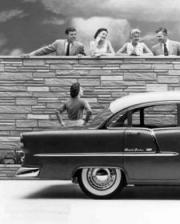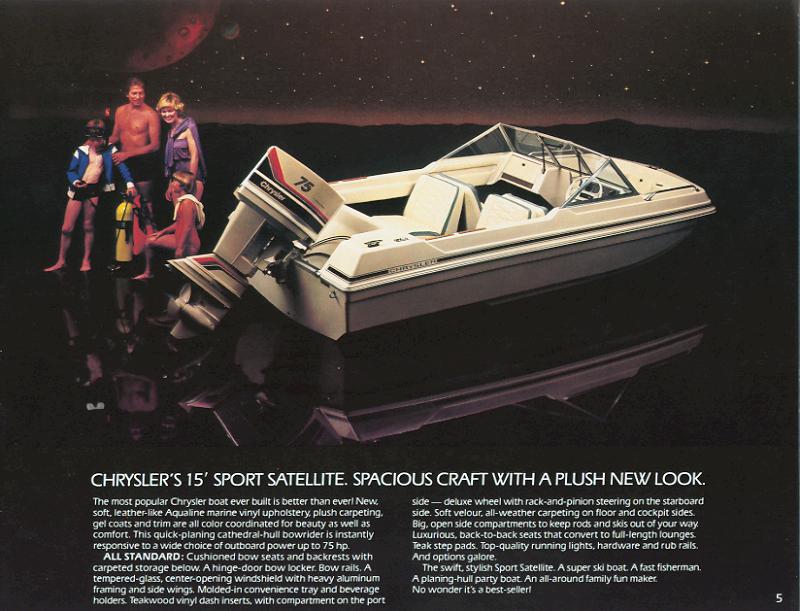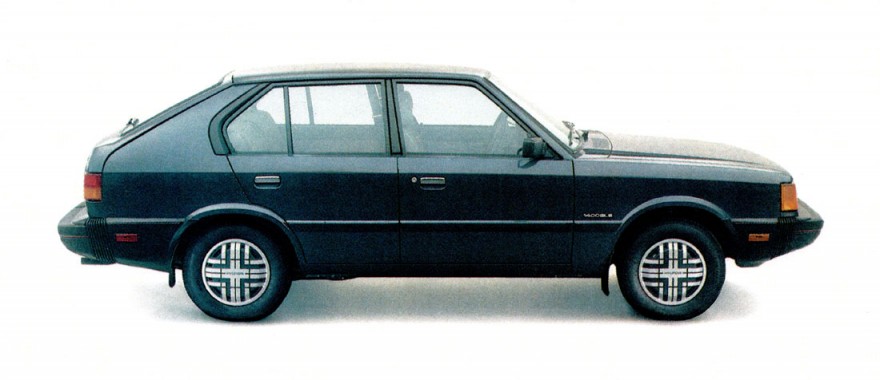
85 Years Ago (November 1929): Studebaker Trims Prices; War Hits Exports; Chrysler Strike Drags; Essay on Communism, Socialism.

Studebaker has announced prices for its revised ’40 models that are generally lower than those on its ’38 lineup. Eight of 11 variants have lower price tags, ranging from $5 on the $785 Champion Deluxe 4-door sedan and $895 mid-level Commander Coupe to $45 on the top-line President Club Sedan. Prices of the least costly models, Champion Custom Coupe and Champion Club Sedan, remain unchanged at $660 and $700, respectively. The $1,095 President 4-door sedan is Studebaker’s most pricey ’40 model. Popularity of these cars will keep the plants at South Bend, IN, operating at near capacity at least through the end of the year, according to Ward’s Automotive Reports.

The effects of the widening war in Europe are being more sharply felt by the U.S. auto industry. Exports have dropped significantly in the past month after posting a modest increase to 234,932 in January-September from 232,028 in like-1938. In addition to the U.S. ban on exports to Germany, Great Britain has stopped issuing new driver licenses, increased auto-related taxes, as well as suffering a gasoline shortage and restricted credit. “In the more tense neutral countries, new restrictions curtail imports of cars from us,” Ward’s says. Belgium, for example, now requires special permits to import cars, motorcycles, batteries and tires. Sweden has prohibited private car use and placed severe restrictions on gasoline consumption, while Switzerland has halted private vehicle operation on weekends and holidays to conserve fuel. Car-use restrictions also have been put in place in Denmark and Norway. Meanwhile, exports to South America continue unabated, reviving interest in building an international highway to link the region with the U.S. One drawback is that the U.S. would be required to “pledge a considerable share of the road’s financing.”


Hoping to put additional pressure on Chrysler to accept union contract demands for ending the lengthy labor strike, the UAW-CIO says it will attempt organize the foremen of the struck facilities. According to WAR, “There can be little doubt now of the significance of (Chrysler President K. T.) Keller’s remarks that the aim of the union is complete control over production.” A main stumbling block in negotiations has been the union demand for a closed shop. “Some of the wording of such a demand is reminiscent of some aspects of the definitions in the accompanying essay on Communism and Socialism,” according to the newsletter’s editors. In that essay WAR argues for the immediate establishment of a fund to provide one-way passage for individuals preferring other forms of governments. “We should not ask them to stay here any longer under our system of government.”
70 Years Ago (November 1944): War Needs Amplified; Army Releases Workers; WMC Challenges UAW

Although cuts in war materiel production have taken place in recent months at some plants, an impending order influx is likely to challenge the ability of those facilities to meet upcoming demand. According to WAR, a “changed situation on the European battlefront, involving modified military strategy, has made it necessary to increase certain manufacturing schedules in marked degree.” So much additional volume is being ordered that the War Manpower Commission and other government agencies are “at their wits’ end as to where the labor is to be found to attain the intended volumes.” Reportedly included in the upcoming orders is a near doubling of B-29 Flying Fortress bomber production, along with significant new orders for large-bore guns, extra-size ammunition, rockets, combat tanks, heavy trucks and certain other types of invasion equipment. More orders for the B-32 “super bomber” and other new-style aircraft also are expected. Even after conflict ends in Europe, it is forecast Pacific Theater demands will mean a reduction of not more than 10% in war materiel output.
With 1945 production imperiled by a lack of workers, the U.S. Army says it will release 1,000 soldiers, principally to man automotive foundries, forges and extra-size tire-making plants. It is part of a plan in which the Army is combing lists of personnel to find upwards of 20,000 skilled workers to meet upcoming schedules. As a further inducement to attract workers to foundry and forge operations, the government has authorized a “considerable advance” in wage rates in those facilities.
The head of the WMC’s Michigan regional office is challenging UAW assertions of growing layoffs in Detroit-area plants. The government official says that while “some” layoffs have occurred, there are still 25,000 unfilled job openings in the area, 4,500 of which are considered critical to the war effort. Cancellation of some contracts are to be expected as equipment demand shifts according to changes in fighting strategies, the WMC official says. As an example he cites the cutback in small-arms ammunition production after an inventory showed it would not be necessary to increase output to 60,000,000 units monthly from 30,000,000.
60 Years Ago (November 1954): Ford, Chevy Battle; DeSoto Goes V-8; AMC Mighty Mite
Ford and Chevrolet are locked in a tooth and nail battle for 1954 car production leadership, the results of which could determine the outcome of the “all important” fight for sales supremacy. Both brands are expected to end the year with approximately 1,400,000 cars built, an increase of 5.5% over 1953 production of 1,477,299 Chevrolets
and a gain of 18% from 1,184,187 Fords built last year.
On Nov. 17, Ford production reached 1,187,123 units to surpass not only the entire 1953 volume, but the 1,187,122 units turned out in 1950 as well. It was Ford’s best showing since 1,507,132 cars were assembled in 1929, but no threat to the record 1,817,891 units it built in 1923. Latest available figures show Ford sold 925,878 new cars for 1954 through August, just shy of Chevy’s 928,009 deliveries. The neck-and-neck race is expected to continue through the end of the year, with December playing a “crucial” role in determining the outcome.

On Nov. 17, some 3,000 U.S. DeSoto dealers take the wraps off the all-new ’55 lineup to reveal the “longest, lowest, roomiest and most powerful models in the brand’s history.” All are powered by a V-8 engine, the Powermaster 6-cyl. series having been discontinued. The ’55s are offered in two series, Firedome and Fireflite. The lower-price Firedome comes in 4-door sedan, hardtop, convertible and station wagon body styles, all powered by a 185-hp engine mated to a 3-speed column-shift manual transmission. Except for the wagon, the upscale Powerflite features the same body styles, but is powered by a 200-hp engine. Optional on both is the Powerflite 3-speed automatic transmission featuring an instrument-panel-mounted selector lever. The DeSoto line has been pared to eight variants from 10, while at the same time Dodge has dropped its entry-level Meadowbrook series and hiked the horsepower of its 6-cyl. engine to 123 from 110 through the use of a new 2-bbl. carburetor.

Although production is on hold pending the fitting of a suitable engine, American Motors has acquired the right to build the Mighty Mite military-style vehicle, initially developed by Mid-America Research Corp. in Wheatland, PA. In tests by the U.S. Army and Marines, the diminutive 4-wheel-drive-vehicle was able to successfully climb an 87% grade, ford streams, pull through knee-deep mud and travel at 57 mph (92 km/h) on the highway. Riding a 65-in. (1,651-mm) wheelbase, the Mighty Mite weighs just 1,496 lbs. (679 kg) compared with 2,665 lbs. (1,209 kg) for the standard 81-in. (2,057-mm) wheelbase military Jeep. AMC says it is developing a lightweight aluminum-block air-cooled engine to be built at the former Hudson car assembly plant in Detroit. Mighty Mite assembly also would take place there under auspices of the Hudson Special Products Div.
50 Years Ago (November 1964): Ford, Rambler Expand in Mexico; 60% Padded Dash; Chrysler Boats; Vent Windows Out?
Ford and American Motors have completed expansion of their facilities near Mexico City. Ford has added an engine plant, foundry, quality control laboratory, engineering laboratory and Mexico’s only full-scale test track. Ford says the expansion will allow it to build cars and trucks mainly from components sourced in Mexico. The engine plant will supply up to 50,000 V-8s annually for use in Ford Galaxie, Falcon and Mustang cars, as well as light trucks, assembled at nearby plants. A new $7 million facility, AMC’s first engine plant outside U.S. also opens this month. It is operated by Vehiculos Automotores Mexicanos, a joint venture of AMC and Kaiser-Jeep. The plant, located in Toluca, will build 8,000 6-cyl. engines annually on a single shift for installation in VAM-built Rambler cars and Jeep vehicles.
According to Goodyear Tire and Rubber, 60% of all ’65-model cars will be built with a padded instrument panel, a 20% increase over ’64 and the highest rate since dash padding was introduced as an option on ’56 Ford models. The forecast ’65 rate includes 100% on luxury cars and some sporty models such as the Ford Mustang. The take rate on lower-price and standard-size models, where it often is optional, will be 30%-40%, according to Goodyear, which credits development of less-costly polyurethane foam to replace latex foam as a significant factor in increased usage over the years. Credit also should be given to the development of new vinyl coverings that are less costly, longer lasting and glareproof, Goodyear says.

Chrysler is rumored to be readying an expansion into boat building, speculation the automaker has neither confirmed nor denied. Some analysts scoff at the idea of Chrysler building boats, due to the low volume and highly competitive nature of the business. Speculation that Chrysler is about to expand beyond marketing of marine versions of its car engines has been fueled by extensive testing of various marine-engine designs, including outboards, on the St. Clair River that runs alongside Chrysler Marine’s Marysville, MI, operation. The Marysville facility currently has the capacity to build up to 12,000 marine-engine conversions monthly.

The vent window may be on the way to extinction, according to a WAR story that says “some manufacturers are giving serious consideration to the elimination of the vent window on their ’66 2-door hardtops equipped with air conditioning.” Advantages cited include reducing the ability of thieves to break into a car by manipulating the vent window lock and reduced wind noise. More importantly, ventless front windows could also mean the dawning of the flush-type window on U.S. cars, in which window glass is set flush with the out sheet metal. In addition to giving the cars a sportier look, the change may be a step closer to the day when car windows are fixed as air conditioning becomes standard on all models, the story says.
25 Years Ago (November 1989): Ford Takes Jaguar; Chrysler May Cut Plants; AWD Sales Soften; Ford, GM Drop Hyundai Action.
Jaguar Plc has agreed to be acquired by Ford for $2.5 billion, ending a bidding war between Ford and GM for control of the British luxury car maker. Ford directors are expected to approve the deal despite the fact many analysts say the price is too high. Daimler-Benz also looked at acquiring Jaguar, but backed off due to the high price tag.
Chrysler says it is studying the possibility of closing at least one additional assembly plant in 1990 as part of a strategy to deal with the sharp recession it is forecasting. Two likely contenders are the St Louis, MO, car plant, where Chrysler Lebaron/Dodge Daytona models are sourced, and the former American Motors facility in Brampton, ON, Canada, that builds the Jeep Wrangler/YJ. Based on Chrysler’s product plans through the late 1990s, those are the only facilities that have not been assigned replacements when current models reach the end of their production runs in ’92 and ’95. Already, Chrysler has scheduled the closing of its Jefferson Ave. plant in Detroit after Dodge Omni/Plymouth Horizon output ends there at the close of January 1990.

U.S. sales of all-wheel-drive light vehicles have softened slightly this year. Based on a WAR survey of sales through October, AWD vehicle deliveries are forecast to reach 1.6 million units this year, down from 1,663,316 in 1988. Harder hit are AWD cars, sales of which are seen falling between 11% and 15% to as low as 105,000 units in 1989 from 122,133 last year. In contrast, sales of similarly equipped light trucks are expected to fall less than 3% to 1.5 million units from 1,541,203. The decline of AWD car sales is attributed in part to the fact many of those models are based on aging platforms that are attracting fewer buyers in general. One “up and coming segment” is the AWD van, led by the Mazda MPV. Some 3,057 of them have been sold through October with full-year sales forecast at 4,000-5,000 units. GM and Ford will join the market in ’90 with AWD variants of the Chevy Astro/GMC Safari and Aerostar, respectively. Chrysler is slated to debut an AWD versions of its minivans in ’91.

Ford of Canada and GM of Canada have decided to drop court action initiated early in 1986 seeking to penalize Hyundai Canada for “dumping” its aging rear-drive Pony small car. The federal suit, claiming Hyundai sold the vehicle for less than its home-market cost in 1986-87, was launched after the Canadian government’s Import Tribunal ruled the South Korean automaker had sold the Pony below cost, but neither Ford nor GM had been harmed and therefore it would not fine Hyundai for its actions.





